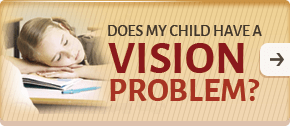Vision Therapy for Improving Sports Performance
Sports Performance and Vision Disorders
Our visual skills play a vital role in our ability to play sports. Many of our patients find that their sports performance improves, even though they came to us for help with their difficulty with reading. The same types of vision disorders which can make reading and learning difficult can often interfere with sports performance.
For example, we have seen children who do well with T-ball, fall apart when it comes to baseball because the size of the ball is significantly smaller and harder for them to see. Once their vision problem is corrected, baseball becomes much easier.
Vision problems that impact sports performance can occur in children and adults. Therefore it becomes important that you know the signs to watch for.
Signs a vision problem may be interfering with your sports performance:
- Eye-hand coordination seems to decrease throughout the game
- Visual judgment (such as depth perception) seems to be less accurate after you get tired and have played for a while
- You tend to drift in and out of “the zone”
- Double vision, blurred vision, excessive blinking or watery eyes occur periodically throughout the game
- You find it harder to follow a moving object than your teammates
- Your squint a lot more often for near or far visual tasks
- During a game, you turn your head to use one eye rather than the other
- More practice doesn’t improve performance
- Sports which require the ability to aim at a target are harder
- You perform better in sports with larger balls, no balls or hockey pucks at all
Sometimes sports professionals reach a ceiling in their performance, and they want that extra edge to outperform their competition. For example, Larry Fitzgerald, a wide receiver for the Arizona Cardinals, attributes his ability to catch the ball with his eyes closed to having received vision therapy as a child.










